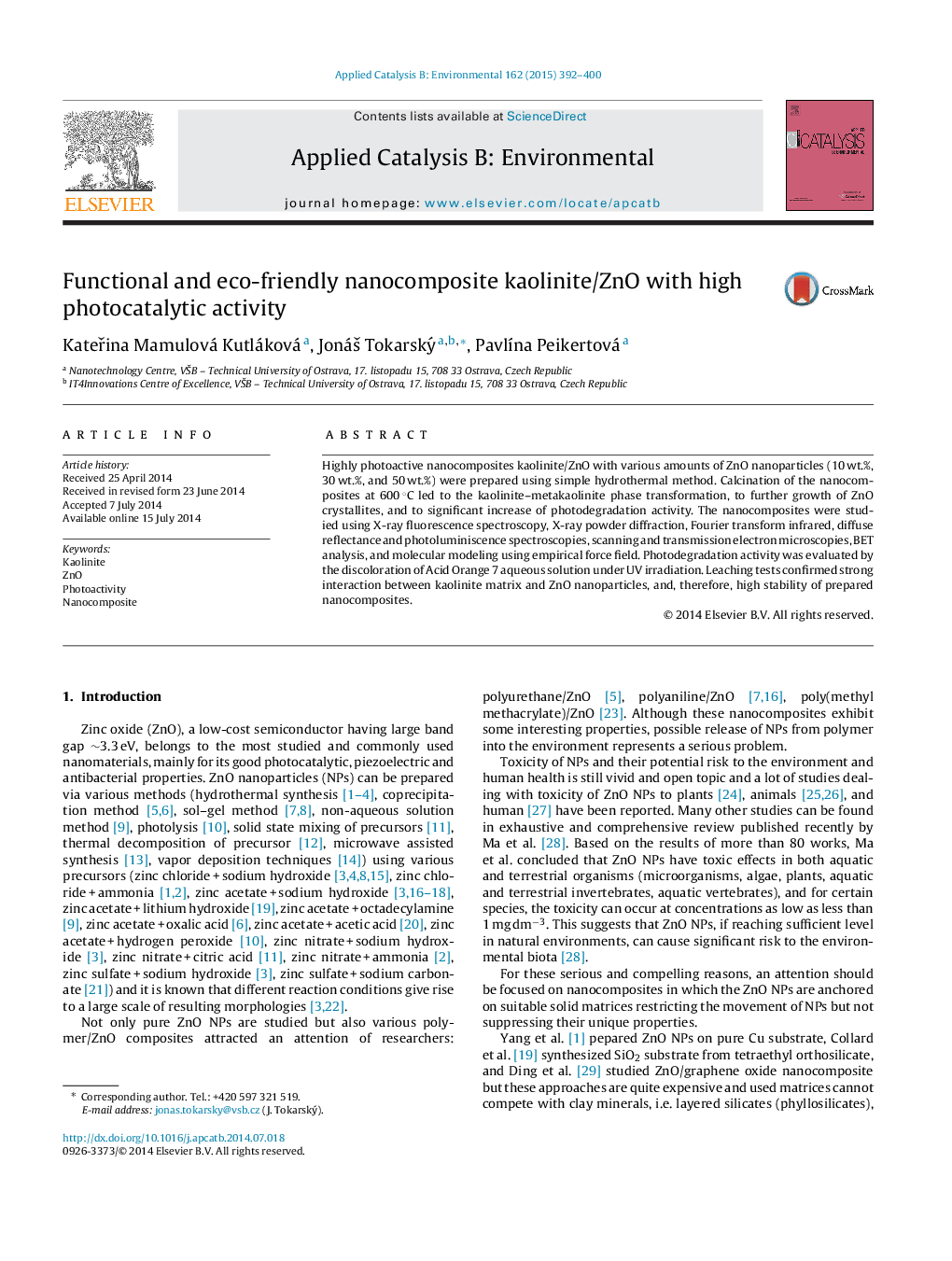| کد مقاله | کد نشریه | سال انتشار | مقاله انگلیسی | نسخه تمام متن |
|---|---|---|---|---|
| 45660 | 46418 | 2015 | 9 صفحه PDF | دانلود رایگان |

• Kaolinite/ZnO nanocomposite exhibits very high photodegradation activity.
• The optimum amount of ZnO nanoparticles was found to be 50 wt.%.
• Leaching tests confirmed that kaolinite/ZnO nanocomposites are non-hazardous.
• Anchoring of ZnO on kaolinite restricts the release of Zn into the environment.
Highly photoactive nanocomposites kaolinite/ZnO with various amounts of ZnO nanoparticles (10 wt.%, 30 wt.%, and 50 wt.%) were prepared using simple hydrothermal method. Calcination of the nanocomposites at 600 °C led to the kaolinite–metakaolinite phase transformation, to further growth of ZnO crystallites, and to significant increase of photodegradation activity. The nanocomposites were studied using X-ray fluorescence spectroscopy, X-ray powder diffraction, Fourier transform infrared, diffuse reflectance and photoluminiscence spectroscopies, scanning and transmission electron microscopies, BET analysis, and molecular modeling using empirical force field. Photodegradation activity was evaluated by the discoloration of Acid Orange 7 aqueous solution under UV irradiation. Leaching tests confirmed strong interaction between kaolinite matrix and ZnO nanoparticles, and, therefore, high stability of prepared nanocomposites.
Figure optionsDownload as PowerPoint slide
Journal: Applied Catalysis B: Environmental - Volume 162, January 2015, Pages 392–400